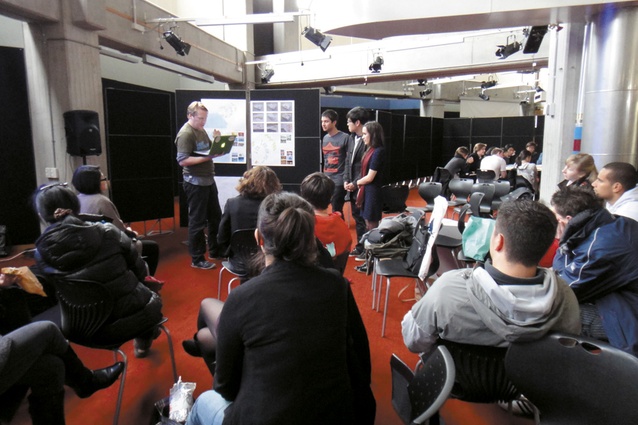The humanitarian architect
Co-founder and CEO (“Chief Eternal Optimist”) of Architecture for Humanity, Sinclair has been appointed as the University of Auckland School of Architecture and Planning’s international architect-in-residence for 2011.
Self-dubbed “ambassador for architects” Cameron Sinclair feels more at home in the company of politicians at the World Economic Forum than behind a desk in his office at Architecture for Humanity’s San Francisco headquarters.
Sinclair co-founded Architecture for Humanity (AfH) in 1999 as a charitable organisation that seeks architectural solutions for humanitarian crises and provides design services to communities in need. Over the last three years, AfH has doubled in size every six months and now employs over one hundred people – it is now one of the world’s most active disasterreconstruction organisations, with current projects in Haiti, Chile, Japan, Pakistan, New Orleans and, now, Christchurch. AfH’s Auckland chapter was one of the first local organisations to launch global fundraising efforts for Christchurch. The group, led by a small team in Auckland, has so far raised about thirty thousand dollars, mostly from individual donors giving modest donations of five to ten dollars via social networking platforms.

The international architect-in-residence program was established in 2010 to allow students the opportunity to interact with a globally significant architect to achieve an in-depth understanding of his or her approach and underlying ideas. Sinclair, whose schedule parallels that of US Secretary of State Hillary Clinton in terms of miles logged in the air, is teaching his unique design approach to fourth-year architecture students, and has presented public lectures in Auckland and Christchurch. Sinclair’s studio is part of a School of Architecture and Planning project that is working to help develop the vision and ideas required for the rebuilding of Christchurch – it involves the entire student body of its third- and fourth-year courses (around two hundred students) for the four months of the current semester.
During his visit, Sinclair made a lasting impression both at the University of Auckland and among the Christchurch community with AfH’s mantra: “Follow your heart, break the rules, get it built.” On the subject of rebuilding Christchurch, Sinclair has expressed his concern over the lack of transparency in the process of demolishing heritage buildings, as well as a general absence of assertiveness by local leadership. Having worked closely with governments in other post-disaster regions, Sinclair observed that Christchurch needs a “benevolent dictator” or a “whipping boy” – someone who can take responsibility (or blame!) but get essential things done in order to move forward. Sinclair’s radical but refreshing views reflect’s AfH’s youthful dynamism – the organisation’s supporters are typically students and young professionals under thirty years of age.
AfH’s local project partner in Christchurch is Unlimited Paenga Tawhiti School (UPT), which lost its Cashel Street learning hubs in the February earthquake. The design of new facilities for UPT is one of the Christchurch studio projects being undertaken by University of Auckland students (others include visions for housing, public buildings, community centres, commercial areas, and urban designs for several parts of the city). The design and research work produced by the students under Sinclair’s direction will serve the dual purpose of laying the groundwork for UPT to develop ideas for reintegrating its facilities into the new Christchurch, as the wounds of the reverberant aftershocks begin to heal, but also to become a resource for AfH’s next intervention: an international design ideas competition to generate concepts for what Christchurch could look like if education became the driver for its redevelopment. The competition will be hosted by Open Architecture Network – an online project management platform – and was launched on 4 September 2011, the anniversary of the Darfield earthquake.












